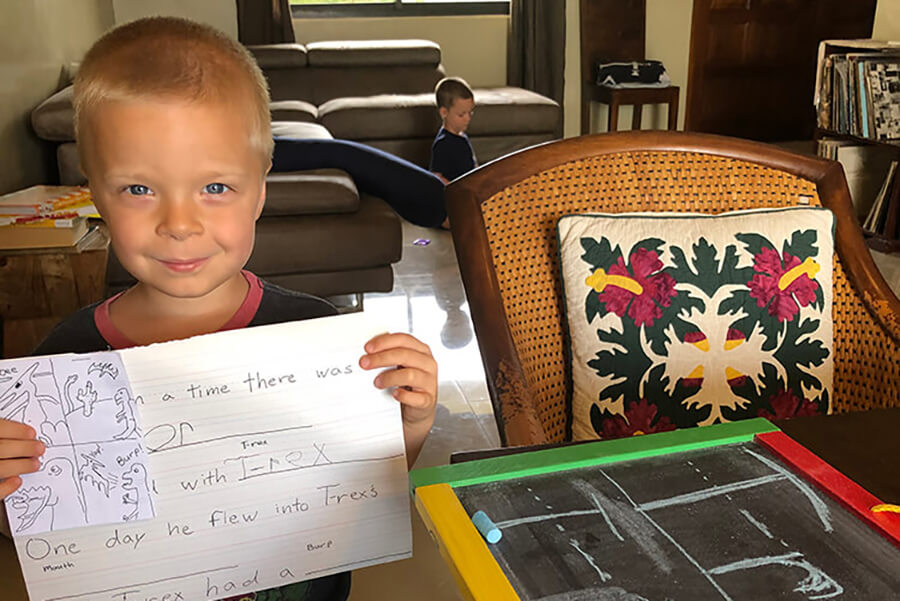The three R’s of homeschooling: Routine, resourcefulness, and reflection
The three R’s of homeschooling: Routine, resourcefulness, and reflection
The three R’s of homeschooling: Routine, resourcefulness, and reflection
5/5/2020

Those of us with children at home due to school closures are managing the added — and for some, first-time — responsibility of being a homeschool teacher, requiring us to get creative and adjust our schedules to meet this daunting demand. As a teacher and a parent, I am offering these strategies to adjust to this change.
Stick to a routine
Establishing a regular routine for children is essential in a classroom, and it will
make all the difference in the world at home. In uncertain times, predictable schedules
will lower stress levels for everyone and help you and your kids get into a groove
where they are thriving — not just surviving — academically.
In our home, each “school” day starts at 8 a.m. when I lead a P.E. session followed
by a language arts block. When this morning session is done, we have lunch together,
and then my wife takes over in the afternoon with art, an educational TV block, and
math. Throughout the day we plug in recess blocks to help us all decompress.
Within your routine, set weekly goals for your children’s learning so that you’re
not just running drills all week but working toward a goal. For example, our language
arts goal last week was to craft a complete story with a setting, a problem, and a
solution that integrated important vocabulary words. The vocabulary words were selected
each day for writing exercises. By Friday both of our boys had completed stories.
They contributed five written words to the story but felt ownership over the ideas.
If you’re also working from home, share your situation and your plan with your supervisors
and peers so that appropriate adjustments may be made to your work schedule. It’s
likely others are in the same boat, and some agreements about meeting times will help
maintain productivity.
Be resourceful
You can find all sorts of resources around you at home. A beach towel can become the
perfect independent workstation for a child, outfitted with blocks, crayons, and paper.
An old boogie board can become a drawing pad. Even the tiles on your floor can help
you describe shapes, angles, arrays, or multiplication tables.
Place 12 toy cars in a bag, remove three cars, and have your child make a prediction
of how many are left. Sort stuffed animals by color or size. Pick a flower and then
draw and identify its parts. You’d be surprised at what you can use for lessons around
your home once you remove your notions of the original intent. Some of my School of
Education students at the University of Guam have come up with using toilet paper
tubes as pots to grow an herb garden.
Reflect
Taking time to reflect at the end of each day will help you identify challenges and
successes so you can adjust your course the next day. Forgive yourself for the mistakes
you make. Remember that you are a student, too, and your kids will teach you. Include
your children in the process. What did you like about today? What went well? What
went wrong? Reflection will give you a chance to celebrate successes and replicate
that feeling in the weeks ahead.
Have a good journey! Buen biahe!

Matthew C. Limtiaco is an assistant professor and chairman of the Elementary Education
program at the University of Guam. He holds a doctorate in education from the University
of Southern California.
